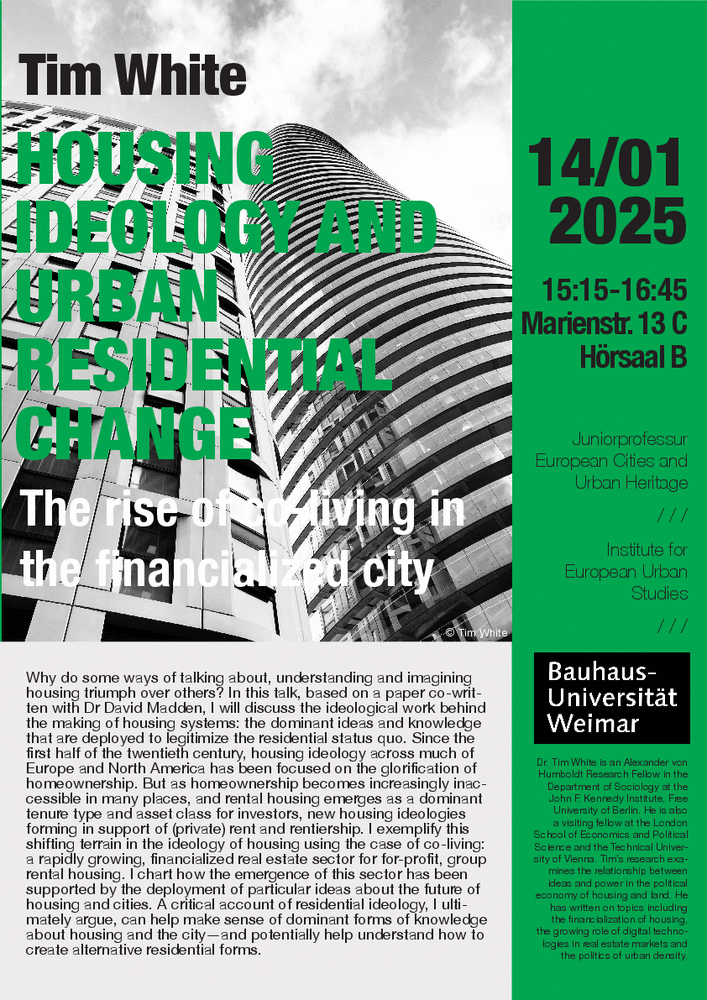🏙️Context
This article, published in an academic journal, examines the rise of co-living as a response to the changing dynamics of urban housing. Authored by Tim White and David Madden, it explores the concept of housing ideology, which refers to the dominant ideas and justifications surrounding housing systems and their roles in the political economy.
💡Co-Living and Housing Ideology
Co-living represents a new form of privately operated, for-profit rental housing that has been gaining traction in urban areas, particularly among younger and middle-class populations. The article argues that the rise of co-living is supported by four key ideological elements: corporate futurism, technocratic urbanism, market populism, and curated collectivism. These elements work together to legitimize co-living within the housing system and enhance its profitability.
📉Shifts in Housing Systems
The article highlights significant structural changes in housing systems across Europe and North America. Owner-occupation is declining, while private rented accommodation is on the rise, particularly among younger households and marginalized communities. This shift is part of a broader financialization and commodification of housing, where new forms of ownership and tenancy are being created. The co-living sector, which emerged prominently in the mid-2010s, is characterized by flexible rental contracts and communal spaces, designed to attract young professionals in major urban centers.
💰Financialization of Co-Living
Co-living has become a financialized real estate sector, attracting substantial investment. Reports indicate that global funding in co-living increased by over 210% annually since 2015, with the total exceeding $3.2 billion. This growth is driven by venture capital and private equity investments, positioning co-living as one of the fastest-growing residential asset classes in Europe and the US.
🏠Ideological Narratives
The ideology surrounding co-living presents itself as a progressive solution to urban housing crises. It emphasizes flexibility and communal living as alternatives to traditional homeownership. However, despite its claims to democratize housing, co-living often reinforces existing inequalities and precarities in urban environments. The authors argue that while co-living critiques elements of the contemporary housing system, it does not provide a genuine alternative to financialized urbanization.
🌱Sustainable Urban Living
The article also discusses how co-living is framed within the context of sustainable urban living. Co-living companies often market themselves as solutions to urban challenges, promoting density and efficient use of space. However, this portrayal obscures the reality that many co-living spaces cater primarily to affluent individuals, often reinforcing social and economic divides. The authors call for a critical examination of the narratives that co-living promotes, as these narratives shape public perceptions and policy decisions around housing.
🔍Conclusion
In summary, the article provides an analysis of the rise of co-living within the broader context of housing ideology and urban change. It highlights the ideological work that underpins this emerging housing subsector, emphasizing the need for critical perspectives on housing ideologies to foster genuinely democratic alternatives in urban living.
